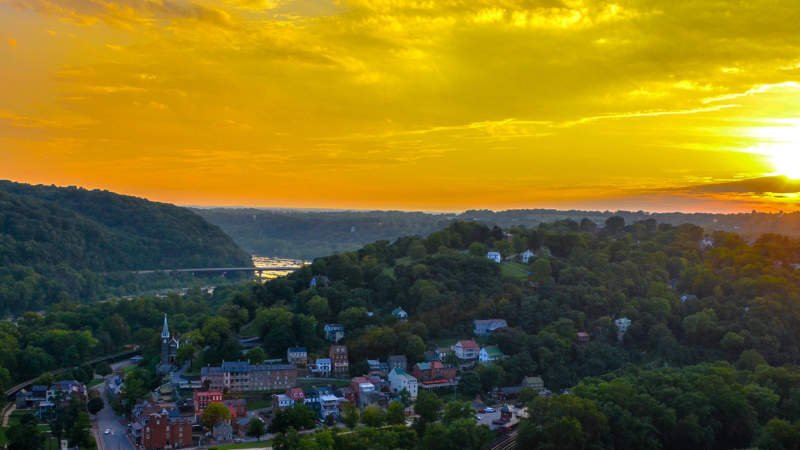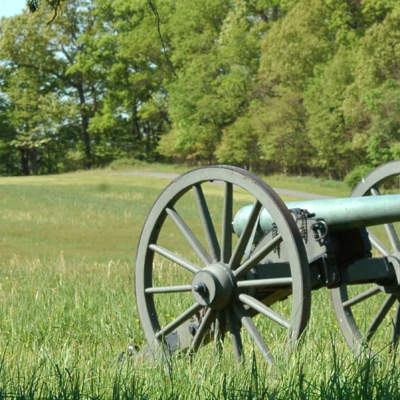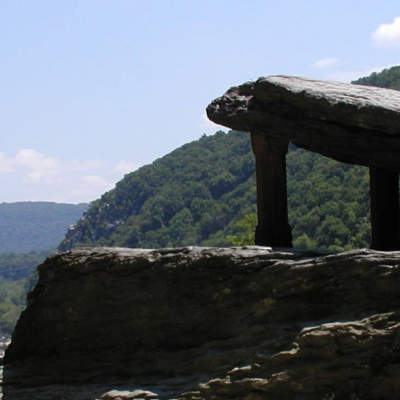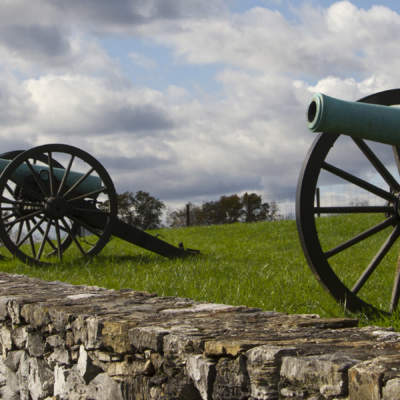In the valley where the Shenandoah River flows into the Potomac River, Harpers Ferry was the site of the only railroad bridge connecting northern and southern states across the Potomac. The town came to national attention prior to the Civil War, because it held the federal armory which abolitionist John Brown’s and a small group of supporters raided in an effort to form a slave revolt in 1859. A strategic communication and transportation node along the C&O Canal, Harpers Ferry changed hands eight times during the war.
Nearby Landmarks
Today, the tiny hamlet is designated as the Harpers Ferry Historic District, and is part of the surrounding Harpers Ferry National Historic Park. Many restored nineteenth century buildings have been converted into museums honoring the town’s history. The red-sandstone-trimmed St. Peter’s Catholic Church sits high above on a prominent knob and travelers can easily find restaurants, guesthouses, B&B’s, outfitters, and dozens of unique retail shops. Amtrak’s Capitol Limited stops here, and picnic spots with great views are abundant. Lovely Bolivar, an adjacent residential community, contains several B&B’s, a library, restaurants, a summer farmers market, and a café.
Local Events and Activities
The surrounding mountains and rivers offer spectacular whitewater rafting, fishing, mountain biking, tubing, canoeing, hiking, ziplining, and rock climbing. The famous Appalachian Trail winds through Harpers Ferry, and a short scramble up to Jefferson Rock reveals a spectacular “scene worth a voyage across the Atlantic,” according to Thomas Jefferson, the eventual U.S. President.
Parking and Trail Access
Parking is quite limited in the Harpers Ferry Historic District. Your best bet if arriving by car is to park in the dedicated lot for Harpers Ferry National Historical Park, and to take the park service shuttle (or walk a bit of the Appalachian Trail) into town. Access to Harpers Ferry Historic District from the C&O Canal Towpath is via a popular and newly-rehabilitated bike and pedestrian bridge across the Potomac River.




